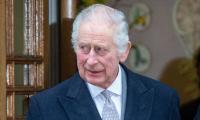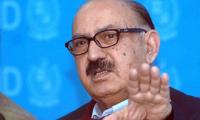Elite sports can be a short-cut to fame, wealth and glory. But playing sports at the top level is not without its risks. International sports stars fight frequent battles with fitness problems. Some of them overcome them while others succumb to one injury or the other and are forced to bow out at the prime of their careers.
Back in the late nineties, when I used to cover squash internationally, I saw first-hand how Jansher Khan’s knee injury caused a rapid decline in his world ranking and finally ended his career. From being the undisputed world number one, Jansher slipped out of the top ten and was soon a story of the past. He still had a lot of squash left in him but the record eight-time World Open champion couldn’t manage his knee injury properly. He didn’t take it seriously in the beginning and later opted for all the wrong treatments. In the end, an unsuccessful knee surgery ended his illustrious squash career. Before Jansher, his legendary predecessor Jahangir Khan also lost his battle with fitness issues and was forced to retire after ruling the sport for more than a decade.
Our top cricketers, too, face fitness issues every now and then. Sports injuries remain a major threat for international stars all over the world. Remember Neymar? The Brazilian superstar has a World Cup jinx as he broke a bone in his back during Brazil’s 2-1 quarter-final win over Colombia in 2014. Just weeks before World Cup 2018 in Russia he fractured his metatarsal in PSG’s Ligue 1 victory over Marseille in February.
Rory McIlroy was the biggest star in world golf after winning The Open Championship in 2014. The Northern Irishman was world number one at the time. Yet he was unable to defend his crown after rupturing an ankle ligament while playing football with his friends. McIlroy was forced to miss the Open and returned with a 17th place finish in the PGA Championship.
In Pakistan, sports injuries are even more frequent than in the developed world because of a lack of awareness among our sportspersons. While the rest of the sporting world has embraced latest technology, change is taking place a bit too slowly in Pakistan. However, two young surgeons are trying to accelerate it. Dr M. Kazim Rahim Najjad and Dr. Muhammad Sufyan are fully qualified surgeons, who have the expertise to treat sports injuries at their department in one of the major hospitals in Karachi - the Liaquat National Hospital (LNH).
The Department of Orthopedics at LNH is functional since 1972. Since its establishment the department has provided comprehensive musculoskeletal care for all orthopedic related conditions. It has been a centre of excellence for trauma and Arthroplasty. In 2016 the department initiated another state of the art service of Sports Injury management under the dynamic supervision of Prof. Syed Shahid Noor who is the Head of the Department. The department has two foreign trained fully qualified surgeons — Dr Kazim Rahim and Dr Sufyan. The management of LNH played a pivotal role in providing the infrastructure and state-of-the-art equipment for this service with the great vision of Dr. Salman Faridi who is the Medical Director of this hospital.
LNH’s Sports injury department offers a full range of services for sports injury related problems. There is a dedicated nutrition department which looks after the needs of nutrition of sportsmen. The Operation Theater is functional 24 hours with the state of the art equipment especially to manage minimally invasive therapeutic advanced arthroscopies for sports injuries.
The Kazim-Sufyan duo mans the sports injury department. Dr. Kazim completed his training of Sports Medicine from Germany, Iran and then France. Dr. Sufyan did his training from Germany, Singapore and United Kingdom in Sports Medicine. Both have expertise of looking after injuries from simple knee and shoulder injuries to very complex multi-ligamentous injuries of knee and shoulder. They have been managing these injuries successfully for the past two years. Management of this sort is a great service to the community as previously players and general population used to travel abroad for this sort of management. TNS interviewed the two doctors. Following are the excerpts of the interview.
TNS: How successful have you been in creating awareness about sports
injuries in Pakistan?
A: Since 2016 a lot of awareness has been created In Pakistan regarding the management of Sports injuries. Many awareness sessions have been conducted at National Bank Pakistan Sports Complex, Bahria College, City School PAF Chapter, etc. A comprehensive Sports Injury symposium was conducted at LNH in September 2018 and we are planning a series of national awareness programmes in the upcoming calendar year.
TNS: Pakistan is a sports-mad nation but still lags behind in fields like sports medicine. Do you think we can catch up with the developed world?
A: We definitely can catch up with the developed world slowly and gradually. One of the reasons due to which we are lagging is proper fitness of players and lack of guidance to sustain the stress of sports in the field. Many of our good players get an injury and are forced to end their careers in their prime. With awareness and proper centers like LNH we are on the right track towards achieving excellence in Sports medicine.
TNS: In your experience what are the most common sports-related injuries in Pakistan?
A: Most common sports injuries depend upon the type of sports a player is involved in. A lot of shoulder injuries are seen in cricket, squash and tennis players. Footballers come with a lot of knee injuries and spine is invariably involved in many sports altogether. Most of these injuries are due to improper warm up, lack of stamina and health related issues of the players.
TNS: Our high-profile sportsmen like cricketers travel abroad for any injuries. Do you think that LNH has good enough facilities to treat them?
A: LNH is in the process of transition in transforming towards a center of excellence for sports injuries management. So far we have the facility to diagnose and manage 70 to 80 percent of the injuries that might affect our high profile sportsmen.
TNS: Have you treated any national level sports persons at LNH?
A: We have treated many international and national players of different sports related fields who had joints and soft tissue related injuries which were operated upon successfully and the players are back to the their respective fields.
TNS: Do you plan to expand the sports injuries facility at LNH in the future?
A: LNH has a vision of becoming a state of the art facility in Asia and attract international Medical tourism from neighboring countries like South Asia, Middle East and Far East countries. The vision is to expand in terms of facilities and services in area of Sports medicine
TNS: What is the future of sports medicine in Pakistan?
A: The future of Sports medicine is bright in Pakistan. Many international companies which are prominent in sport injury equipment are taking interest and investing in this field. This will help us to have the latest technology available for the best treatment options for our patients. The awareness programme which we have started has helped us to educate our sportsmen about their problems and the available treatment so that they can perform to their maximum potential. We are in the process to liaison with the international sports injury forums and societies so that we can share our mutual experience. This will help us boost our clinical and surgical skills.
Khalid Hussain is Editor Sports of The News
khalidhraj@gmail.com
caption
THE DYNAMIC DUO... Dr M. Kazim Rahim Najjad and Dr. Muhammad Sufyan
caption
Neymar... is one of the most injury-prone sports stars in the world
Physical education and sports promotion
By Aamir Bilal
Competitive sports in Pakistan have reached the lowest ebb in the country. Our performance in Hockey World Cup in India and Test series against New Zealand side are just a few examples of the poor state of affairs.
What is wrong with a country which is the 33rd largest in the world spanning over 881,913 square km, with a population of over twenty million! We can’t produce a single Olympic gold medallist. We get defeated by teams like Belgium. We are unable to show any spine in Test cricket, when it comes to fourth innings against any formidable bowling attack.
In such a situation, media houses bash federations, sports boards and associations and demand resignations from officials. As a result, the team captains, managers and coaches are changed. The new management demands more facilities and finances from the government, but the results instead of improving get worse.
Those at the helm of affairs link the sports performance of the country directly with the lack of facilities, which is true to a great extent. But there are other reasons as well. The biggest of them is the lack of physical fitness culture, due to poor physical education methods taught and practised in our education institutions.
The physical education teachers in Pakistan undergo an outdated education programme. A couple of years ago, Dr Tibor and his team of physical education experts from Semmelweis University of Hungary visited NUST. They concluded that the standard of physical education and sport sciences in Pakistan is much lower than what is desired at the international level. The experts were also of the opinion that there is no shortcut except introducing latest physical education and sports sciences programmes in Pakistan’s universities and building the capacity of physical education teachers, coaches, training institutes and bodies responsible for developing physically fit athletes.
The importance of physical education in the West can be ascertained from the fact that in July 2006, most school districts in the United States were required by Congress to have a local school wellness policy. It focussed on nutrition education, physical activities, and availability of all foods on campus.
The 1990 Surgeon General’s Report in USA guidelines for school and community programmes to promote life-long physical activity among young people from the Centres for Disease (CDC) emphasised the need for daily physical education, from grades K-12.
The CDC developed a well-coordinated school health programme with eight components: health education, physical education, health services, nutrition services, staff health promotion, counselling and psychological services, healthy school environment and parent and community involvement.
We are a developing nation that has lots of issues to address and very little fiscal space to accommodate physical education.
The cabinet of Prime Minister has many competent people such as Education Minister Shafqat Mehmood and Zubaida Jalal, who served as Education Minister in General Pervez Musharraf’s cabinet from 2002 to 2007.
Our education policy makers think that more time is needed for academics to achieve high grades. But several studies are available that show that more time spent in physical education does not lower standardised test scores (Sallis Mekenzie, Kolody, Lewis, Marhsal – 1999).
Furthermore, extra time spent in academics and tuitions does not necessarily enhance test scores or grades (Berliner 1990).
There is also evidence that physical education and recess may enhance academic performance and classroom behaviour of children.
The integration of physical education means the development of a child in a holistic manner. They get opportunities to develop their motor skills and life skills through sports and later take up professional sports or use the attained skills in their day-to-day lifestyle.
The scarcity of playing areas is another cliché that needs to be addressed. The fact of the matter is that there is enough playing spaces available in government schools in both rural and urban areas. The private schools established in residential areas are hardly 15 percent in number and I am quite optimistic that if government commits itself seriously to promoting sports and physical education, a large number of students will shift to government schools and colleges.
There is an immediate requirement to revamp the physical education syllabus, build the capacity of physical education teachers and upgrade the existing sports facilities in government institutions.
Pakistan has tremendous talent in sports. It is the lack of method and opportunities that hinder their development in this area. If we can take sports back to education institutions, there is no reason why we can’t develop educated athletes like Majid Khan, Zaheer Abbas, Waseem Bari, Saeed Anwar and hockey stars like Samiullah and Hassan Sardar once again.
sdfsports@gmail.com
Spain's Rafael Nadal. — AFP File PARIS: Former world number one Rafael Nadal is unlikely to be seeded at next...
French President Emmanuel Macron shoots to score a goal from the penalty spot in the Varieties Club charity football...
Juventus and Milan face off in fight for second place. — AFP FileMILAN: Juventus v AC Milan is traditionally one of...
Mohsin Naqvi during a meeting in this picture on November 12, 2023. — X/@GovtofPunjabPK LAHORE: In response to the...
The Pakistan Cricket Board chairman Mohsin Naqvi on Thursday held a meeting with the New Zealand Cricket Chief...
Pakistan Women's Cricket team skipper Bismah Maroof. — AFP/FileKARACHI: The former Pakistan Women’s skipper Bismah...







